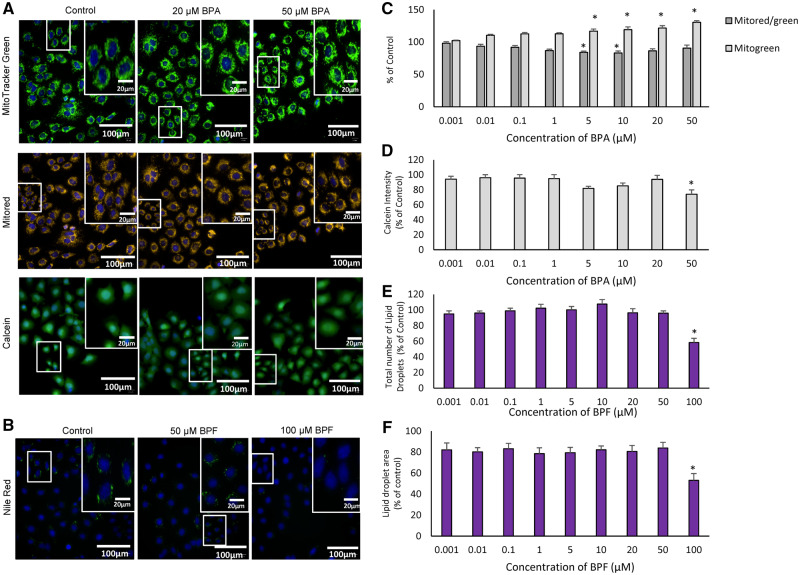Figure 3.
Effects of bisphenols on C18-4 mouse spermatogonial cells. Cells were exposed for 48 h to each chemical followed by fluorescence microscopy using the Operetta High Content imaging system (40× magnification). (A) Images illustrating the effects of BPA on mitochondrial numbers and calcein intensity in C18-4 cells. Total mitochondrial numbers and the ratios of active: total mitochondria were determined using Mitotracker Green and Red dye staining. Calcein intensity was determined using Calcein dye staining. Control versus 10, 20, and 50 μM, at which effects were observed, are displayed (N = 5). (B) Images illustrating the effects of BPF on lipid droplet numbers in C18-4 cells. Lipid droplet numbers were determined using Nilered dye staining. Control versus 10, 20, 50, and 100 μM, at which effects were seen, are displayed (N = 5). (C) Graph illustrating the effects of BPA on total mitochondrial numbers and the ratio of active: total mitochondria, and (D) graph representing the effect of BPA on calcein intensity, an indication of cell membrane integrity. (E and F) Graphs illustrating the effects of BPF on the total number of lipid droplets (E) and lipid droplet areas (F) in C18-4 cells. One-way ANOVA was conducted to determine concentrations where there were significant effects *p < .05. Values represent the mean ± SEM, N = 5 replicates.

